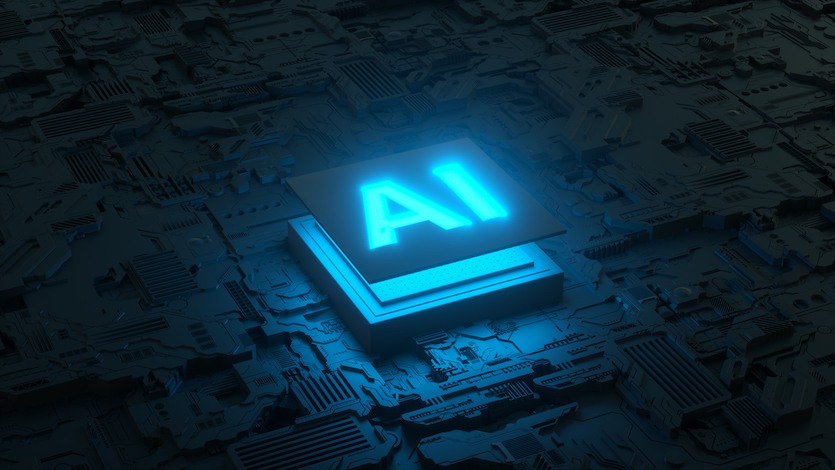For the last couple of years, artificial intelligence (AI) has been encountered in every aspect of our lives and the world we live in. Robots and machines are starting to perform certain tasks even better than us by deep learning and mimicking human intelligence and actions.

This means that we are on the verge of a great wind of change in the entire economy and all industries. Some sectors, which were the early birds of the digital transformation journey, seem to remain the pioneers of the artificial intelligence evolution.
So how will the banking industry and other financial institutions be affected by upcoming AI models? What are some examples of artificial intelligence in banking industry? Let’s explore the relationship between AI and the future of banking step by step.
AI-powered machines are becoming more skilled in human jobs with each passing day. With natural language processing, they can translate languages and provide seamless customer service. They can diagnose diseases and even perform surgeries that save human lives.
Many people are afraid that robots will take their jobs in this sense. Isn’t that the idea that science fiction scenarios have sown over the years? However, the benefits of AI are endless. So what many people believe is that humans and machines will improve and strengthen each other.
The result of Harvard Business Review’s research with 1500 companies confirms that the highest productivity gains are experienced when people and machines work together. The research also shows that while 84% of respondents think they should use AI to achieve their business goals, only 16% have any experience that goes beyond experimentation.
Here are some other findings from a survey conducted by Mozilla Foundation:
When we turn to the banking industry and correspondence banking, the benefits of AI are more clear. The role of artificial intelligence in banking industry is to enable financial services to run much more efficiently, securely and promptly, rather than taking jobs from people. The McKinsey report estimates that artificial intelligence can provide up to $1 trillion of additional value in global banking each year.
In the context of financial institutions and correspondence banking, AI is an umbrella term that refers to a wide range of technologies and techniques, such as machine learning, RPA tools, and software robots.
These technologies have the potential to revolutionise the way banks operate by streamlining their processes and enabling them to automate their operations, from back-office operations and trade finance to risk management and credit scoring. Additionally, they can enable banks to offer digitalized products and services while improving the quality of internal operations.
Therefore, AI-powered technologies should be seen as a tremendous resource for financial institutions and correspondence banking in meeting ever-changing expectations in customer and banking relationships. That’s why it has become a priority for banks to adapt quickly to ‘intelligent banking’ in order to stay competitive.
Let’s go over a few AI technologies that are already making big waves in the banking industry:
Thanks to AI technologies, large amounts of data can be processed rapidly. AI also manages structured and unstructured data beyond human capabilities.
This empowers financial institutions to mitigate risks and automate the risk management process. Through smart AI and machine learning algorithms, past risk cases are analysed, making it possible to predict potential problems before they occur.
At the same, artificial intelligence monitors the behaviour, shopping habits and location of customers with their credit cards in real time and activates the security mechanism when there is an unusual transaction. Thus, it prevents possible fraudulent activities.
Another example of AI-driven tools for identifying risks in correspondence banking is Globit’s RISQ Compliance tool. The solution monitors a variety of trading limits and utilises AI-powered, self-learning outlier detection to spot suspicious transactions.
First of all, AI models are extremely objective, unlike humans. Lending digital banks and mobile apps can use the data provided by users’ smartphones. This information is used to improve customer satisfaction by providing personalised options and making a more accurate credit score assessment.
This is just the tip of the iceberg because AI-powered credit scoring has the ability to easily analyse much more complex data to improve correspondent banking operations.
For example, Globit’s RISQ FI solution provides correspondent banks and financial institutions with a comprehensive AI-powered FI infrastructure, enabling them to manage all FI and sovereign credit lines in one place to acquire full control, efficiency and transparency over their banking operations.
The solution achieves this by processing a large amount of data in real time with AI-powered algorithms and by utilising integrated RAROC and collaborative UI systems.
Robotic process automation in banking refers to the use of software robots to automate repetitive tasks, such as customer onboarding, loan processing, fraud detection and account reconciliation.
Robotic process automation (RPA) produces significant outputs to reduce operational costs. Using AI models to automate processes not only eliminates potential human errors but also makes workforce use much more efficient.
In order to trigger the next steps of the process, artificial intelligence retrieves and verifies necessary data, creates reports and forwards these outputs to the relevant units inside the bank.
Thus, process automation is one of the most critical issues in the transition to digital transformation and artificial intelligence technologies for financial institutions and correspondence banking. Earnst & Young’s report predicts a cost savings of between 50% and 70% with robotic process automation methods.
According to Bloomberg reports, the search for employees with experience in data science, artificial intelligence or machine learning in banks and other financial institutions increased by 60% last year.

It is certain that the way of doing business will evolve with AI-powered technologies, and the competition will also change not only among financial institutions but also employees.
AI-based technologies may seem transformational today. But in the near future, mastering artificial intelligence or related technologies will cease to be a distinctive skill and instead become a basic expectation. This is because banks and financial institutions will have to act like technology companies, and they will need employees who have the skills to manage and even improve all processes.
Existing employees who want to stay competitive in the AI-dominated future of the finance industry will need to be involved in adaptation as soon as possible. At this point, domain expertise in finance will be their greatest advantage. On the other hand, new entrants to the industry will be expected to prove their technical knowledge and adapt to industry dynamics as quickly as possible.
In short, those working in intelligent banking will need to be versatile, and having both technological and sectoral knowledge will prove them to be forerunners.
Financial institutions will be expected to show innovative and agile approaches to rapidly adapting to artificial intelligence technologies. Guiding existing employees with the right adaptation process to benefit from their industry know-how and starting the transformation from the inside will be the most effective way to proceed in robotic processes that will always need a human touch.
On the other hand, finding the best partner that can provide a seamless transformation process is also vital. With 20+ years of functional and technical treasury know-how and our certified experts, we are here to revolutionise your treasury operations with our correspondence banking solutions.
Reach out to our expert team members to explore how we can help you to keep up with the future of banking by innovating, integrating and automating your treasury processes.